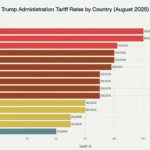Gold has fascinated humans for millennia, serving as a symbol of wealth, power, and security. Its unique properties and universal appeal have made it a cornerstone of economies and a popular investment vehicle. Even today, in an era dominated by digital currencies and complex financial instruments, gold retains its allure. But what makes gold so special? And how can modern investors harness its potential? This comprehensive guide will explore why gold continues to be a trusted investment, how you can invest in it, and what you should consider to make the most of your investment.
Table of Contents
The Historical Significance of Gold
Gold’s journey from a shiny metal in the earth to a global financial cornerstone is a fascinating story that spans thousands of years. Understanding this history can provide valuable context for why gold remains so significant today.
Early Use of Gold as Currency
Gold’s role as a medium of exchange began around 560 B.C.E. when it was first minted into coins. Before this, people traded goods and services directly, which was cumbersome and inefficient. The introduction of gold coins revolutionized trade by providing a standardized and widely accepted currency. These coins were valued for their purity and weight, making gold a reliable and convenient way to conduct transactions. As trade routes expanded across continents, gold became a common currency, used by merchants from Europe to Asia.
The Gold Standard and Its Impact
Fast forward to the 19th and early 20th centuries, and gold’s role had evolved into the backbone of the global monetary system. Many countries adopted the gold standard, which meant their currency was directly linked to a specific amount of gold. This system provided financial stability because the value of money was tied to a tangible asset. However, the rigidity of the gold standard also limited economic flexibility, particularly during times of crisis. For example, during the Great Depression, countries struggled to adjust their money supply because it was fixed to gold. This limitation led to the eventual abandonment of the gold standard, with the United States officially ending it in 1933. Despite this, gold retained its importance as a store of value and a hedge against economic uncertainty.
Gold-related major facts and figures
Top Central Banks Holding Gold Reserves
| Country | Gold Reserves (Tonnes) | Percentage of Total Reserves |
|---|---|---|
| United States | 8,133.5 | 78% |
| Germany | 3,359.1 | 74% |
| Italy | 2,451.8 | 67% |
| France | 2,436.3 | 65% |
| Russia | 2,301.6 | 23% |
| China | 2,141.2 | 3% |
Gold Price Volatility During Economic Crises
| Crisis Period | Gold Price Change (%) | Key Events |
|---|---|---|
| 2008 Financial Crisis | +25% | Stock market crash, recession |
| 2011 Eurozone Debt Crisis | +28% | Sovereign debt issues in Europe |
| 2020 COVID-19 Pandemic | +30% | Global pandemic, economic lockdowns |
| 2022-2024 Inflation Spike | +40% | Global inflation surge, supply chain disruptions |
Gold as a Hedge Against Inflation: Historical Data
| Year | Inflation Rate (%) | Gold Price (USD/oz) |
|---|---|---|
| 1970 | 5.8% | $35.90 |
| 1980 | 13.5% | $850 |
| 2008 | 3.8% | $872.37 |
| 2020 | 1.2% | $1,769.60 |
| 2022 | 7.0% | $1,800.00 |
Costs of Owning Physical Gold
| Expense Type | Cost Estimate | Description |
|---|---|---|
| Purchase Premium | 2% – 10% over spot price | Depends on dealer and type of gold (coins, bars) |
| Storage | $100 – $300/year | Bank vault or secure home safe |
| Insurance | 0.5% – 1% of value/year | Protects against theft, loss |
| Selling Fees | 1% – 5% | Dealers charge a commission on sales |
Gold Investment Options: A Quick Comparison
| Investment Type | Liquidity | Risk Level | Potential Returns | Additional Costs |
|---|---|---|---|---|
| Physical Gold | Moderate | Low to Moderate | Moderate | Storage, insurance |
| Gold ETFs | High | Moderate | Moderate | Management fees |
| Gold Mining Stocks | High | High | High | Volatility in stock prices |
| Gold-Based Savings Plans | Moderate | Low to Moderate | Low to Moderate | Low fees, regular contributions |
Gold vs. Silver: Investment Characteristics
| Characteristic | Gold | Silver |
|---|---|---|
| Market Size (USD) | $10 trillion | $1.4 trillion |
| Volatility | Lower | Higher |
| Industrial Use | Minimal | Significant (electronics, solar) |
| Price per Ounce (2024) | $2,200 | $28 |
Gold in the Modern Economy
Even though we no longer use the gold standard, gold’s significance has not diminished. It continues to play a crucial role in the global economy, particularly as a hedge against inflation and economic instability.
Central Banks and Gold Reserves
Central banks around the world hold substantial gold reserves as part of their financial strategy. These reserves serve as a buffer against economic instability, currency fluctuations, and other financial crises. For example, during the 2008 financial crisis, many central banks increased their gold holdings to protect against the declining value of paper currencies. As of 2024, central banks collectively hold nearly one-fifth of the world’s above-ground gold supply. This practice underscores gold’s enduring value as a financial asset and a tool for maintaining economic stability.
Gold as a Hedge Against Inflation
One of the primary reasons investors turn to gold is its ability to act as a hedge against inflation. Inflation erodes the purchasing power of money, but gold tends to retain its value, even as paper currencies lose theirs. This characteristic makes gold particularly attractive during periods of high inflation or economic uncertainty. For example, during the 1970s, when inflation rates in the United States soared, gold prices skyrocketed as investors sought refuge in the precious metal. This relationship between gold and inflation has persisted over time, making gold a reliable store of value.
How to Invest in Gold
Investing in gold offers several options, each with its own advantages and disadvantages. Whether you prefer the tangibility of physical gold or the convenience of financial products, understanding these options will help you make the best choice for your investment goals.
Physical Gold: Coins, Bullion, and Jewelry
Investing in physical gold is the most direct way to own the metal. This includes gold coins, bullion bars, and even jewelry. Each form of physical gold has its own appeal:
- Gold Coins: Coins like the American Gold Eagle or the South African Krugerrand are popular among investors. They are easily tradable and recognized worldwide, making them a liquid asset.
- Bullion Bars: Gold bars are typically purchased by serious investors who want to hold significant amounts of gold. They come in various sizes, ranging from a few grams to several kilograms.
- Jewelry: While not a conventional investment, gold jewelry can also serve as a store of value. However, it’s important to note that jewelry often carries a higher premium due to craftsmanship and design, which may not be recouped when selling.
While physical gold provides the security of tangible ownership, it also requires secure storage and insurance. These additional costs can eat into your investment returns, so they need to be carefully considered.
Gold Certificates and ETFs
For investors who prefer not to handle physical gold, gold certificates and Exchange-Traded Funds (ETFs) offer convenient alternatives:
- Gold Certificates: These are paper documents issued by banks that certify the holder owns a certain amount of gold stored in a vault. Gold certificates allow investors to benefit from gold’s price movements without worrying about physical storage.
- Gold ETFs: ETFs are investment funds that track the price of gold. By purchasing shares in a gold ETF, you can gain exposure to gold’s price without owning the physical metal. ETFs are traded on stock exchanges, making them highly liquid and accessible to everyday investors.
Both gold certificates and ETFs provide a way to invest in gold without the costs and challenges associated with storing physical gold. However, they also come with their own risks, such as management fees and potential discrepancies between the ETF’s performance and the actual price of gold.
Understanding Gold’s Market Performance
Gold’s performance as an investment can vary widely depending on economic conditions. Understanding its historical trends and how it compares to other investments can help you decide whether gold is right for your portfolio.
Gold’s Price Trends Over the Last Decade
From 2014 to 2024, gold experienced significant price appreciation, increasing by about 84%. However, this growth was not linear. The annualized compound growth rate (CAGR) for gold during this period was 5.66%, with notable fluctuations in price. These fluctuations highlight gold’s sensitivity to global economic events, such as geopolitical tensions, shifts in monetary policy, and changes in investor sentiment.
Gold’s performance over this period reflects its dual role as both a safe-haven asset and a speculative investment. During times of economic uncertainty, gold’s price tends to rise as investors seek security. However, when the economy is stable, gold may underperform compared to other asset classes like stocks or bonds.
Comparing Gold with Stock Market Investments
While gold is often seen as a safe investment, it typically offers lower returns than the stock market over the long term. For example, the S&P 500, which tracks the performance of 500 of the largest publicly traded companies in the United States, has historically provided higher returns than gold. However, during periods of economic instability, gold has outperformed stocks, offering stability when other investments have faltered.
The Risks Involved in Gold Investment
Like any investment, gold comes with its own set of risks. Understanding these risks will help you make informed decisions and avoid potential pitfalls.
Market Risks and Price Volatility
Gold’s price is subject to market fluctuations, influenced by factors such as global economic conditions, currency movements, and geopolitical events. This volatility can make gold a risky investment, particularly for short-term investors looking to make quick profits. For example, gold prices can spike during periods of political unrest, only to fall again when the situation stabilizes. Investors need to be prepared for these ups and downs and consider gold as a long-term investment rather than a short-term trade.
Costs of Owning Physical Gold
Investing in physical gold involves additional costs beyond the purchase price. These include:
- Storage: Gold needs to be stored in a secure location, such as a bank vault or a home safe. Renting a safety deposit box or buying a high-quality safe can add to the overall cost of the investment.
- Insurance: To protect against theft or loss, you’ll need to insure your gold. Insurance premiums can vary depending on the amount of gold you own and its storage location.
These costs can erode your investment returns, especially if the price of gold remains flat or declines over time. As a result, it’s essential to factor in these expenses when considering physical gold as an investment.
Beware of Investment Scams
As gold’s popularity as an investment has grown, so too have the number of scams targeting gold investors. Common scams include:
- High-Pressure Sales Tactics: Some salespeople may pressure you to buy gold quickly, often promising guaranteed returns or claiming that gold prices will skyrocket. These tactics are designed to create a sense of urgency and prevent you from conducting proper due diligence.
- Overpriced Coins and Bullion: Some dealers may sell gold coins or bullion at inflated prices, taking advantage of inexperienced investors who may not know the market value of gold.
To avoid these scams, it’s important to work with reputable dealers, research current gold prices, and take your time making investment decisions. If an offer sounds too good to be true, it probably is.
When and How to Invest in Gold
Investing in gold requires a strategic approach, taking into account market conditions, your financial goals, and your risk tolerance. Here are some key considerations to keep in mind.
Timing Your Investment in Gold
The timing of your gold investment can significantly impact your returns. Gold prices are influenced by a variety of factors, including:
- Inflation Rates: Gold tends to perform well during periods of high inflation, as investors seek to protect their wealth from the eroding value of paper currencies.
- Currency Strength: A weakening U.S. dollar often leads to higher gold prices, as gold becomes cheaper for investors holding other currencies.
- Global Economic Stability: Political and economic uncertainty can drive up gold prices, as investors flock to safe-haven assets.
By monitoring these indicators, you can make more informed decisions about when to buy or sell gold.
Long-Term vs. Short-Term Gold Investments
Your investment horizon will also influence your approach to investing in gold.
- Long-Term Investments: If you’re looking to preserve wealth over time, gold can be a valuable long-term investment. Its historical performance as a store of value makes it a reliable asset for those seeking stability in their portfolios.
- Short-Term Investments: For short-term investors, gold’s price volatility can present profit opportunities. However, this approach carries higher risks, as short-term price movements can be unpredictable.
Regardless of your investment horizon, it’s important to consider how gold fits into your overall investment strategy. Gold should complement other assets in your portfolio, providing diversification and reducing risk.
Gold as a Safe Haven During Economic Uncertainty
Gold’s reputation as a safe haven asset is well-deserved. Throughout history, it has protected investors’ wealth during times of economic and political turmoil.
Gold’s Role in Protecting Wealth
During periods of economic uncertainty, such as financial crises, wars, or high inflation, gold has consistently maintained its value. This stability makes it an attractive option for investors looking to preserve their wealth when other assets are underperforming. For example, during the 2008 financial crisis, gold prices surged as investors sought refuge from the collapsing stock market. Similarly, during the COVID-19 pandemic, gold prices reached new highs as global economies faced unprecedented challenges.
How Gold Benefits from a Declining Dollar
The value of gold is often inversely related to the strength of the U.S. dollar. When the dollar weakens, gold prices typically rise, making it an effective hedge against currency devaluation. This relationship is particularly important for international investors who hold assets in U.S. dollars. As the dollar loses value, their purchasing power decreases, but gold can help offset these losses by maintaining its value.
Gold vs. S&P 500: Comparative Returns (2014-2024)
| Metric | Gold | S&P 500 |
|---|---|---|
| Annualized Growth Rate | 5.66% | 10.5% |
| Average Volatility (Std. Dev) | 14.06% | 18.7% |
| Peak Price | $2,200/oz (2024) | 4,800 points |
| Lowest Price | $1,100/oz (2015) | 1,840 points |
This table illustrates the inverse relationship between gold prices and the U.S. dollar. As the dollar index declined, gold prices increased, highlighting gold’s role as a hedge against currency fluctuations.
Exploring Different Ways to Invest in Gold
Gold investment is not limited to physical gold. There are various financial products and strategies that allow investors to gain exposure to gold without holding the metal itself.
Investing in Gold Mining Stocks
Gold mining stocks offer a way to invest in gold indirectly. These stocks represent ownership in companies that mine and produce gold. The performance of gold mining stocks is closely tied to the price of gold, but they also offer additional growth potential through:
- Operational Efficiency: Well-managed mining companies can increase production, reduce costs, and improve profitability, leading to higher stock prices.
- Dividends: Some gold mining companies pay dividends, providing a steady income stream in addition to capital gains.
However, gold mining stocks also come with risks. The success of these companies depends on factors such as the cost of extraction, regulatory changes, and environmental challenges. Therefore, it’s important to research and choose companies with strong financials and a history of operational success.
Gold-Based Savings Plans
For investors who prefer a more gradual approach to investing in gold, gold-based savings plans are an excellent option. These plans, often offered by banks and financial institutions, allow investors to accumulate gold over time through regular contributions. Key features include:
- Regular Contributions: Investors can make small, regular contributions to their gold savings plan, making it easier to build a substantial gold portfolio over time.
- Secure Storage: The gold accumulated in these plans is stored securely by the financial institution, eliminating the need for the investor to manage physical storage.
- Redemption Options: At maturity, investors can choose to redeem their holdings in physical gold or cash, providing flexibility based on their financial needs.
Gold-based savings plans offer a convenient and low-risk way to invest in gold, particularly for those who are new to investing or prefer a hands-off approach.
Comparing Gold with Other Investments
Gold is often compared to other popular investments, such as silver and Bitcoin. Each of these assets has its own characteristics, advantages, and risks.
Gold vs. Silver as Investments
Gold and silver are both precious metals, but they have different market dynamics.
- Market Size: Gold has a much larger market value than silver, making it a more stable investment. The global gold market is estimated to be worth over $10 trillion, compared to the silver market, which is valued at around $1.4 trillion.
- Volatility: Silver is more volatile than gold, meaning its price can fluctuate more dramatically in response to market changes. While this volatility can lead to higher returns, it also comes with greater risks.
- Industrial Use: Silver has more industrial applications than gold, particularly in electronics and solar panels. This industrial demand can influence silver prices, making it more susceptible to economic cycles.
Investors seeking stability and long-term growth may prefer gold, while those looking for higher potential returns—and willing to accept higher risks—might consider silver.
Gold vs. Bitcoin: Which Is Better?
Gold and Bitcoin are often compared as alternative investments, but they have very different characteristics:
- Tangibility: Gold is a physical asset that you can hold in your hand, while Bitcoin is a digital currency that exists only online. This tangibility gives gold a sense of security and permanence that Bitcoin lacks.
- Stability: Gold has a long history of stability, making it a reliable store of value. Bitcoin, on the other hand, is highly volatile, with its price often experiencing significant swings in short periods.
- Risk and Reward: Bitcoin offers the potential for high returns, but it also comes with high risks. Its value is influenced by factors such as technological developments, regulatory changes, and market speculation. Gold, while offering lower returns, provides a more stable and predictable investment.
For investors looking to diversify their portfolios, a combination of gold and Bitcoin could provide a balance between stability and growth potential. However, it’s important to understand the risks associated with each asset and to invest according to your risk tolerance and financial goals.
Is Gold a Good Investment for You?
Gold has proven itself to be a valuable investment over the centuries, offering stability and protection during times of economic uncertainty. While it may not provide the high returns of more volatile assets like stocks or Bitcoin, its role as a hedge against inflation, currency devaluation, and economic instability makes it a critical component of a diversified investment portfolio.
Whether you choose to invest in physical gold, gold stocks, ETFs, or gold-based savings plans, it’s essential to understand the benefits and risks of each option. By doing so, you can make informed decisions that align with your financial goals and risk tolerance, ensuring that your investment in gold contributes to the long-term stability and growth of your portfolio.
FAQs
1. Is investing in gold a safe option?
- Answer: Gold is generally considered a safe-haven asset, especially during economic uncertainty. However, like any investment, it carries risks, such as price volatility, inflation risks, and storage costs.
2. What are the different ways to invest in gold?
- Answer: You can invest in gold directly through physical gold (coins, bullion, jewelry) or indirectly through financial products like gold ETFs, mutual funds, gold mining stocks, and gold derivatives.
3. How has gold performed as an investment over the years?
- Answer: Gold has shown significant growth over time. For example, from June 2014 to May 2024, gold appreciated by about 84%. However, its performance can be volatile, with an annualized compound growth rate of around 5.66% over the past decade.
4. What are the risks associated with investing in gold?
- Answer: The main risks include price volatility, inflation concerns, political upheaval, and costs related to storage and insurance if you own physical gold.
5. How does gold compare to other investment options like stocks or Bitcoin?
- Answer: Gold is often seen as a stable investment for wealth preservation and a hedge against economic instability, while stocks and Bitcoin are more volatile with higher potential returns. Diversifying across these assets can balance risk and reward.
6. Is gold a good hedge against inflation?
- Answer: Historically, gold has been used as a hedge against inflation because it tends to appreciate in value when the purchasing power of currency declines. However, this is not guaranteed, and past performance may not always predict future results.
7. How can I invest in gold if I don’t want to own physical gold?
- Answer: You can invest in gold indirectly through gold ETFs, mutual funds, gold mining stocks, gold certificates, or gold-based savings plans offered by financial institutions.
8. What are gold-based savings plans?
- Answer: Gold-based savings plans allow you to accumulate gold in small quantities over time. These plans are usually offered by banks and financial institutions, where the gold is securely stored, and you can redeem it as physical gold or cash later.
9. What is the difference between gold and silver as an investment?
- Answer: Gold has a higher market value and is less volatile than silver. Silver has more industrial uses and can be more volatile, but diversifying between the two can provide a balanced approach to precious metal investing.
10. How does the price of gold react to a declining U.S. dollar?
- Answer: Gold generally benefits from a declining U.S. dollar. When the dollar weakens, gold becomes cheaper for investors holding other currencies, increasing demand and potentially driving up prices.
11. Why is gold considered a safe haven during political and economic uncertainty?
- Answer: Gold has historically maintained its value during times of political turmoil, economic crises, and currency devaluation, making it a reliable store of value and a safe investment during uncertain times.
12. What are gold certificates?
- Answer: Gold certificates represent ownership of a specific amount of gold stored by the issuer, usually a bank. They allow investors to benefit from gold’s price movements without the need to manage the physical asset.
13. What role does gold play in a diversified investment portfolio?
- Answer: Gold acts as a diversifying asset because it is not correlated with stocks, bonds, or real estate. Including gold in a portfolio can reduce overall risk and provide stability during market downturns.
14. How does gold perform during economic downturns?
- Answer: Gold often performs well during economic downturns as investors seek safety in assets that maintain value. It can protect wealth when other investments, such as stocks and bonds, are losing value.
15. Is it better to invest in gold or gold mining stocks?
- Answer: Gold mining stocks can offer higher returns than physical gold because they tend to magnify increases in gold prices. However, they also carry higher risks, including the operational risks associated with mining companies.
16. What should I consider before investing in gold?
- Answer: Before investing in gold, consider your financial goals, risk tolerance, and overall investment strategy. It’s also wise to consult with a financial advisor to understand the potential risks and rewards.
17. How does gold’s historical performance compare to the S&P 500?
- Answer: Gold has shown competitive returns over time, but it is more volatile than the S&P 500. The decision to invest in gold versus stocks depends on your investment objectives and risk tolerance.
18. Can gold protect my wealth in the long term?
- Answer: Gold has preserved wealth over thousands of years, maintaining its value across generations. While it may not offer high returns, it provides stability and protection against currency devaluation and inflation.
19. What is the significance of central banks holding gold reserves?
- Answer: Central banks hold gold reserves as a safeguard against economic instability and currency fluctuations. This practice underscores gold’s enduring value in the global financial system.
20. How can I minimize the risks of investing in gold?
- Answer: To minimize risks, diversify your investment across different assets, including gold, and consider investing in gold through ETFs or savings plans rather than physical gold. It’s also important to stay informed about market trends and consult with a financial advisor.















